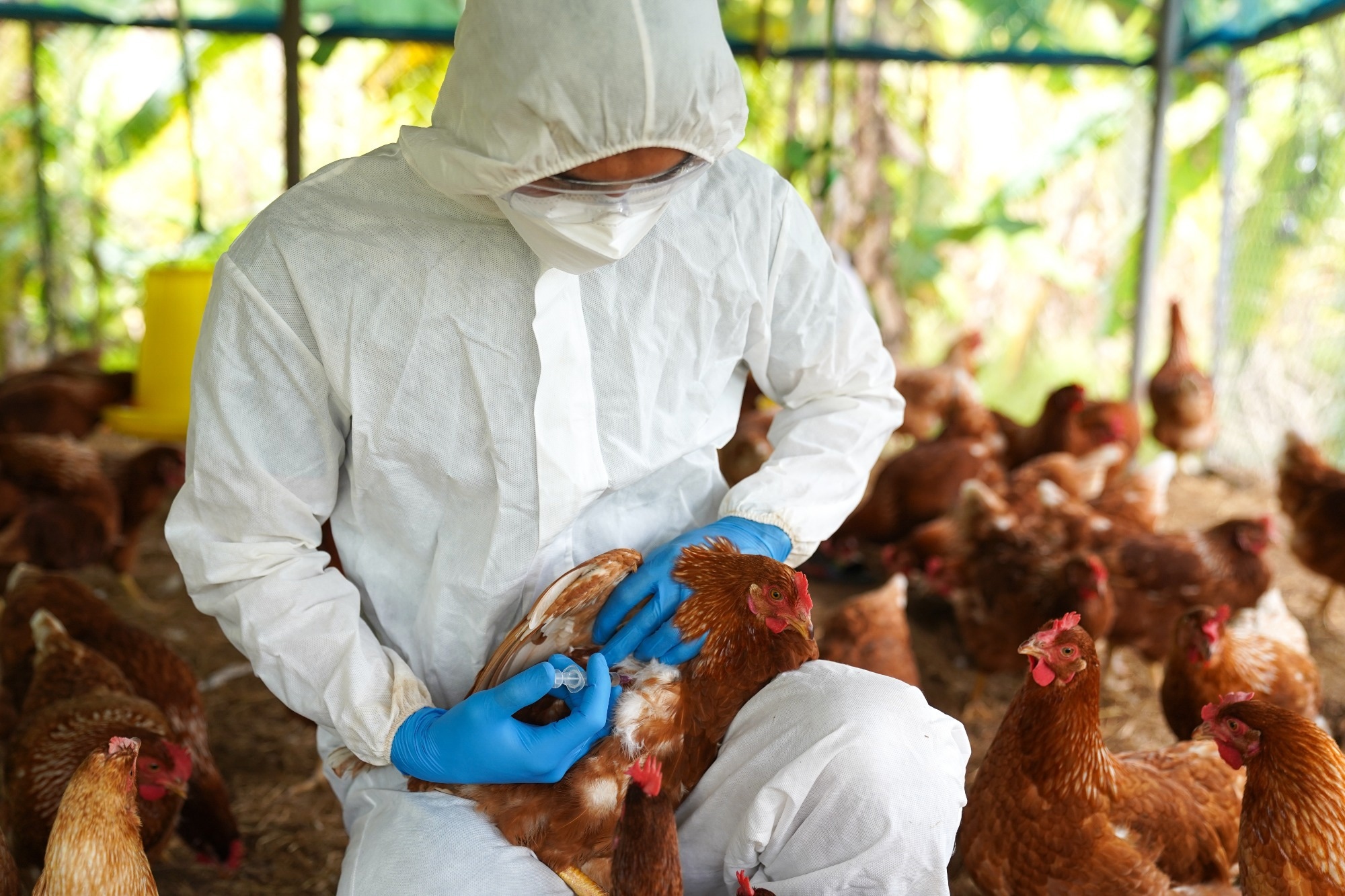In a recent scientific report published in the European Food Safety Authority (EFSA) journal, a large team of researchers from the EFSA and European Centre for Disease Prevention and Control (ECDC) discussed the intrinsic and extrinsic drivers for a potential pandemic due to evolved avian influenza viruses, and risk mitigation measures that are part of the One Health approach.
 Report: Drivers for a pandemic due to avian influenza and options for One Health mitigation measures. Image Credit: Pordee_Aomboon / Shutterstock
Report: Drivers for a pandemic due to avian influenza and options for One Health mitigation measures. Image Credit: Pordee_Aomboon / Shutterstock
Current avian influenza virus status
Wild bird populations in the European Economic Area (EEA) and the European Union (EU) are known to have a high prevalence of avian influenza viruses that cause significant disease and mortality. Outbreaks have also been reported from fur animal farms, where the avian influenza viruses are thought to have been transmitted from birds to mammals. These infections among fur animals are believed to be due to transmission of the virus from birds to various mammalian species and possibly also because of transmission between mammalian species.
Although cases of transmission of these viruses from birds to humans have not been widely reported, the evolution of avian influenza viruses and the dispersal of the virus through migratory wild birds could result in the selection of viruses that can infect humans.
Given that humans do not yet have robust immune defenses against avian influenza viruses, the emergence of a virus capable of infecting and rapidly spreading among humans poses the risk of a potential pandemic. Examining the intrinsic and extrinsic drivers that can facilitate the evolution of avian influenza viruses to infect humans and to develop effective mitigation measures is imperative.
Intrinsic and extrinsic drivers of viral evolution
Factors such as susceptibility of the host and viral characteristics, known as intrinsic drivers, and extrinsic drivers, such as environmental factors, human activities, and climate, can facilitate the emergence of avian influenza viruses that carry mutations that allow them to infect mammals.
Viral characteristics such as the reassortment propensity can drive the avian influenza virus to adapt to mammalian hosts. The hemagglutinin 5 neuraminidase 1 (H5N1) or avian influenza A virus, which contains the 2.3.4.4b clade that is currently circulating, has displayed evolutionary changes that could allow it to infect mammals and reassort. Furthermore, the global prevalence of the H5N1 virus in birds, including heterogenous poultry livestock, could result in the accumulation of various mutations that enable the virus to infect mammals, especially humans.
Reassortment can also lead to rapid genetic shifts that allow the virus to infect and replicate in humans and transmit among human populations. Coinfection of mammals with seasonal influenza and avian influenza virus could also increase the probability of reassortment events.
Furthermore, fur animals such as foxes and minks are highly susceptible to influenza viruses, and the exposure of these mammals to highly pathogenic strains of the avian influenza virus through contaminated feed could drive the virus's adaptation to mammals. Outdoor production farms and those with proximity to areas rich in water birds provide more opportunities for the virus to be introduced into farms. Peri-urban and synanthropic wild animals could also facilitate the spread of the virus from wild birds to humans and animals.
Habitat destruction, extreme climatic events, and weather conditions can also impact the demography and ecology of these wild bird populations, acting as extrinsic drivers of the evolution of the avian influenza virus.
Mitigation measures
Risk mitigation measures included in the One Health approach suggested surveillance among target animal and human populations along with the generation and sharing of genomic data. Target animals included wild and captive birds, poultry, susceptible domestic mammals such as fur animals, cats, pigs, and peri-domestic and peri-urban mammals.
The measures also comprised development and access to sustainable, rapid diagnostic methods using genomic data to screen for avian influenza virus in relevant populations. An additional critical area for risk mitigation was occupational safety in areas where humans interact closely with target animals. Furthermore, reassortment risk can be reduced by vaccinating individuals with a higher probability of occupational exposure to avian influenza against the seasonal influenza virus.
The scientific report also discussed other areas, such as improving the veterinary infrastructure, biosecurity, communicating the risk to various audiences, and vaccinating animals, which could help mitigate the risk of the avian influenza virus adapting to humans and animals.
Conclusions
In summary, this report by the EFSA provided a detailed discussion of various intrinsic and extrinsic drivers, such as viral characteristics, factors that increase the susceptibility of animals, and environmental factors that could accelerate the adaptation of avian influenza viruses to mammalian hosts. The scientists also expanded on various mitigation measures, at individual and community levels, that could be followed to reduce the risk of adaptation and transmission of the avian influenza virus among animal and human populations.
Journal reference:
- European Food Safety Authority (EFSA), European Centre for Disease Prevention and Control (ECDC), C., Adlhoch, C., Alm, E., Enkirch, T., Lamb, F., … Broglia, A. (2024). Drivers for a pandemic due to avian influenza and options for One Health mitigation measures. EFSA Journal, 22(4), e8735. DOI: 10.2903/j.efsa.2024.8735, https://efsa.onlinelibrary.wiley.com/doi/full/10.2903/j.efsa.2024.8735